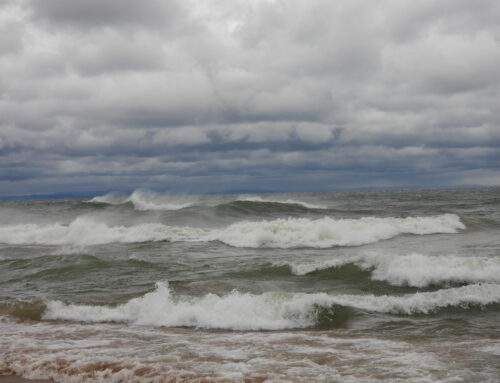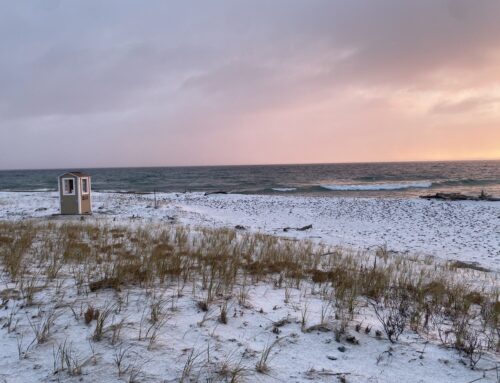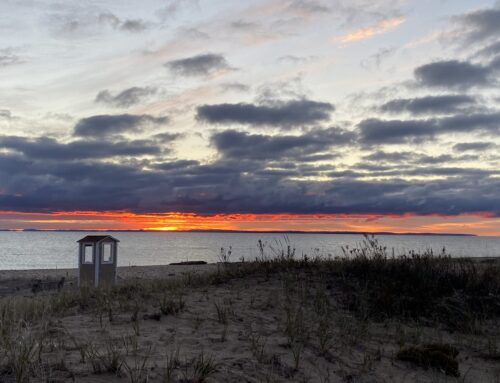This week on the count, we closed out October and ushered in November just in time for a stiff northerly breeze to set in. The first two days of the count were fairly calm and slow for waterbirds, with the highlight being a Parasitic Jaeger that we got to watch harassing the gulls for a while. This marks our 71st jaeger of the season, and what is very likely to be our last. On Halloween, the winds shifted northwards and brought in a solid flight of 1,000 Long-tailed Ducks, but ultimately fewer ducks than I had expected. Then came November, with our first snowflakes of the fall and gale-force winds later in the week that shook all but the last few deciduous leaves from the trees.
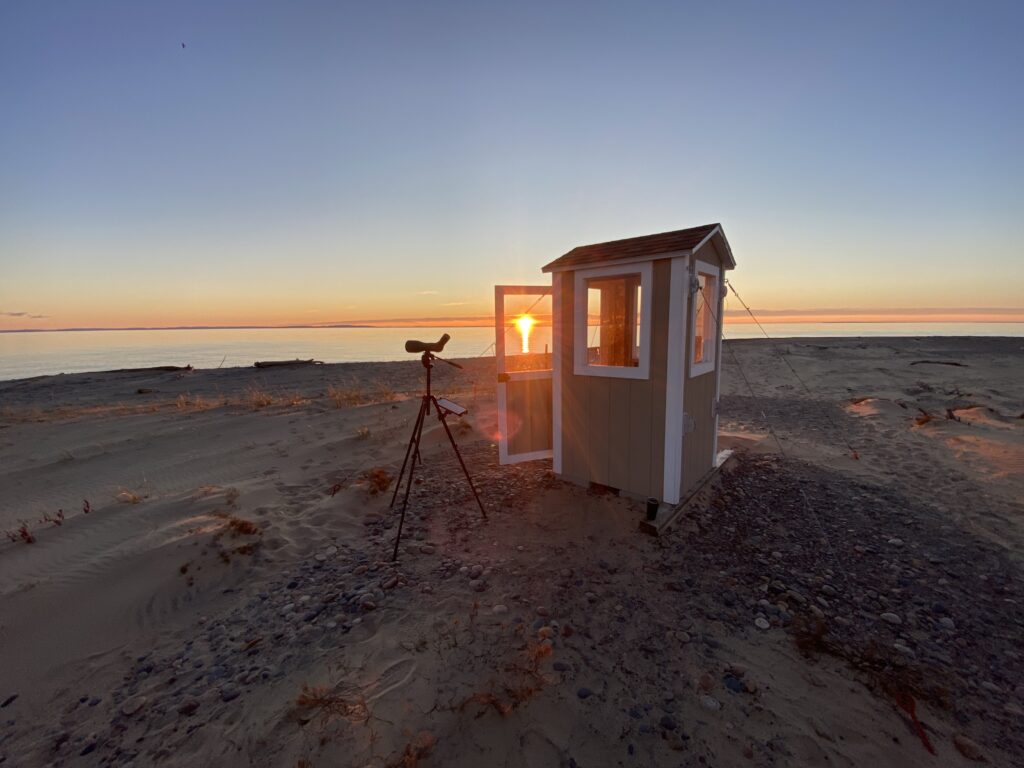
The biggest duck flight of the week was on November 1st, with almost 8,000 individuals flying past. The majority of these birds were Long-tailed Ducks (about 5,500), along with our biggest flights yet of Bufflehead (111), Common Goldeneye (399), and Red-breasted Mergansers (943). This species combination is fairly typical of a late-season flight at Whitefish Point. November 2nd and November 3rd were also solid flights with 1,800 and 2,300 birds, respectively. Fewer Long-tailed Ducks were moving, but bigger numbers of Mallards, Greater Scaup, and White-winged Scoter filled in the gaps. While Mallards are known to be a dabbling duck with a late-season movement, the real head scratcher is the almost 300 American Wigeon that flew past the count this week. I’m not sure where they are coming from at this date, but it’s been a great year for wigeon here. Through the crashing waves on November 3rd, Clay tallied an impressive 5 Harlequin Ducks migrating past the count. It was quite a dramatic scene on the beach with the wind kicking up spray and waves crashing right up to the edge of the dunes. Fortunately, the count station remained dry.
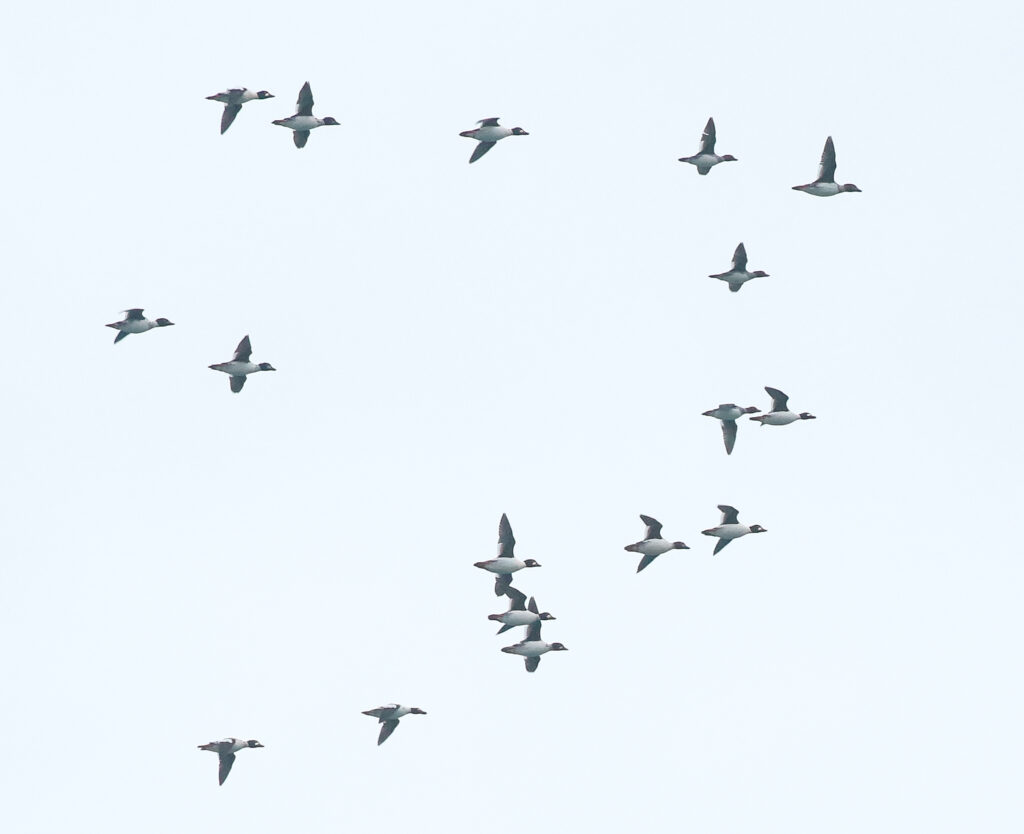
Common Goldeneye. Photo by Skye Haas
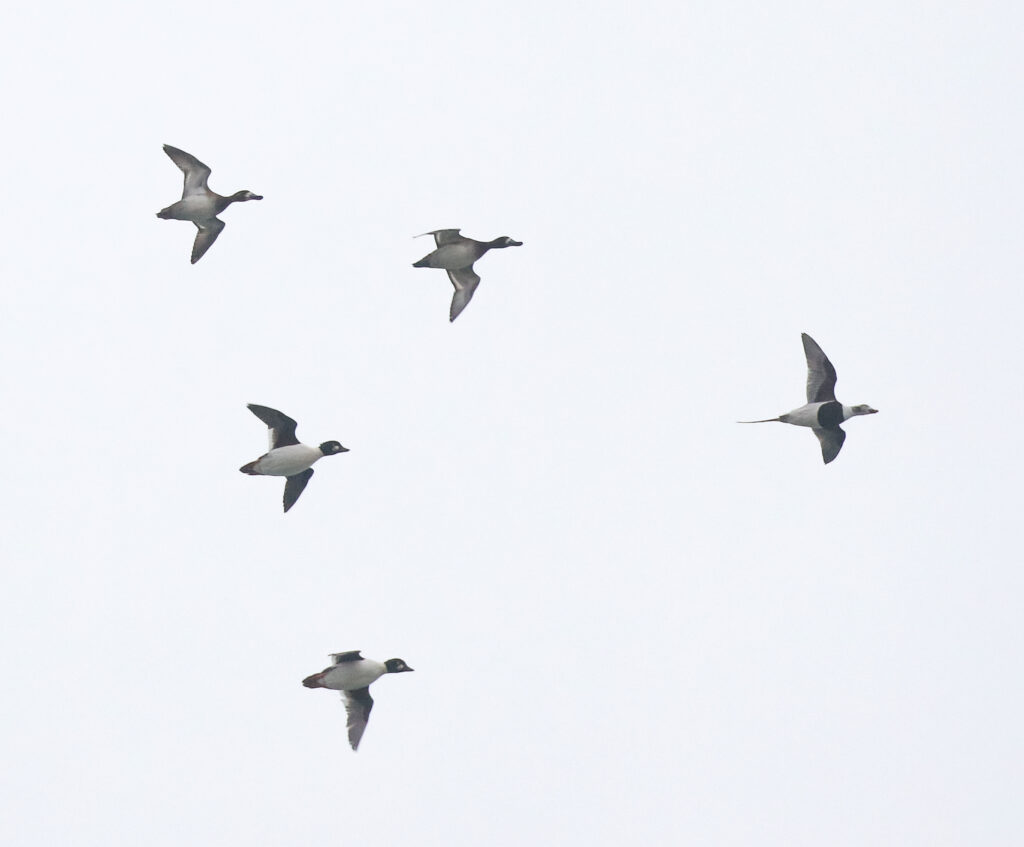
Common Goldeneye, Greater Scaup, and Long-tailed Duck. Photo by Skye Haas
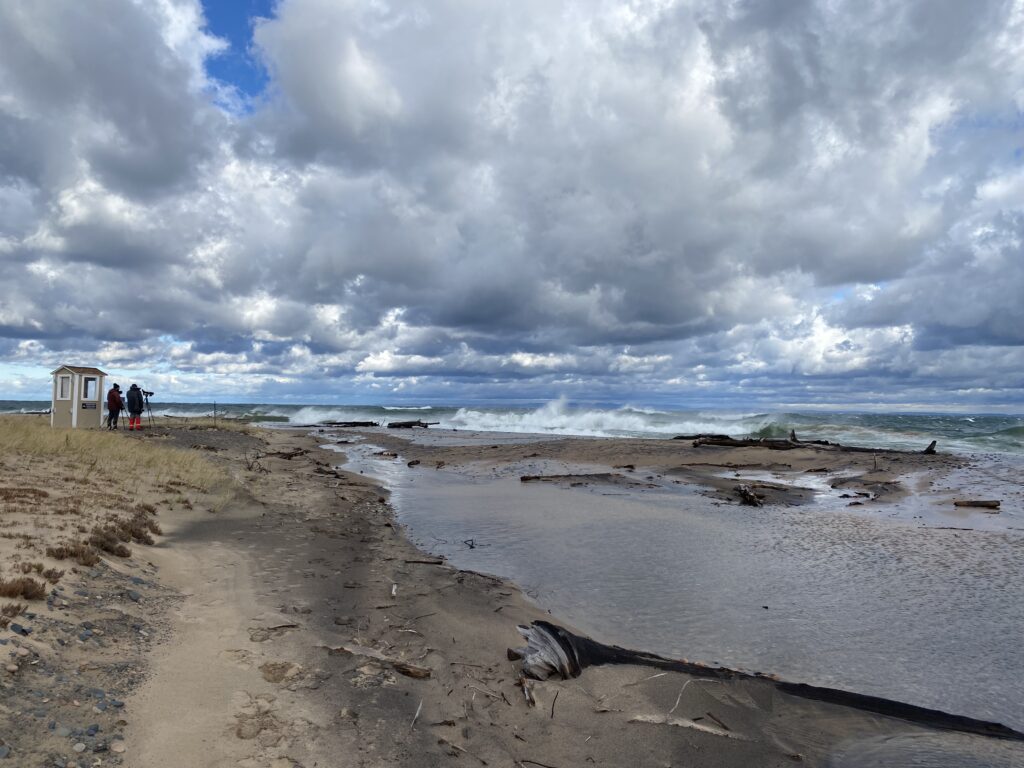
Twice this week, a solo shorebird was spotted flying in off the lake during the count. Each time we got excited in the hopes of a Purple Sandpiper, but our hopes were dashed with a single Sanderling on the 31st and a Dunlin on the 1st.
Gulls are a constant presence at Whitefish Point, loafing in the harbor and flying every which way in search of food. This can make them challenging to count, as exactly which birds are actively migrating can be difficult to determine. There has clearly been some turnover as the season goes on, with Ring-billed Gull numbers dropping and the diversity of high arctic breeders improving. This change is readily apparent right now, as fresh juvenile American Herring Gulls and Iceland Gulls start mixing in with the early-hatching Great Lakes American Herring Gulls. On October 30th, I had a stunning first-cycle Iceland Gull of the Kumlien’s subspecies floating around the tip of the point during the count. A few young Iceland Gulls of the Thayer’s subspecies have also been seen recently, and the harbor provides a good spot to study the minute plumage differences among individuals.

Iceland Gull (kumlieni). Photo by Frank Fabbro

Ring-billed Gull. Photo by Frank Fabbro
Whitefish Point is definitely a hotspot for grouse diversity. I can’t think of many birding locations in the United States where it’s possible to see three different species of native grouse, and on rare occasions, this is possible in a single day at the point. Ruffed Grouse are the most abundant, but there is a bizarre seasonal phenomenon where Sharp-tailed Grouse migrate through the point in late fall. That was the case on the calm, clear morning of October 30th when, just after sunrise, I was scanning the lake looking for waterbirds. I picked up three heavy-bodied grouse with stuttering wingbeats high over the water flying in my direction. They passed right overhead, close enough to hear the sound of their flapping, and disappeared into the dunes behind me. A sight like this is almost an annual occurrence this time of year at the waterbird count. It’s crazy to think of grouse as migratory or consider where these birds are coming from, but without years of continuous monitoring data, it would be easy to entirely miss these sparse regional movements.
Other non-waterbird highlights this week include a Black-backed Woodpecker that visited the count on October 30th, marking our eighth woodpecker species of the season on the Merlin pole. There is also an ever-growing mix of winter finches flying about, with dozens of Evening Grosbeaks and Pine Grosbeaks seen from the waterbird count. It is a common sight to see flocks of Redpolls flying in off the lake and feeding around in the jackpines behind the count.
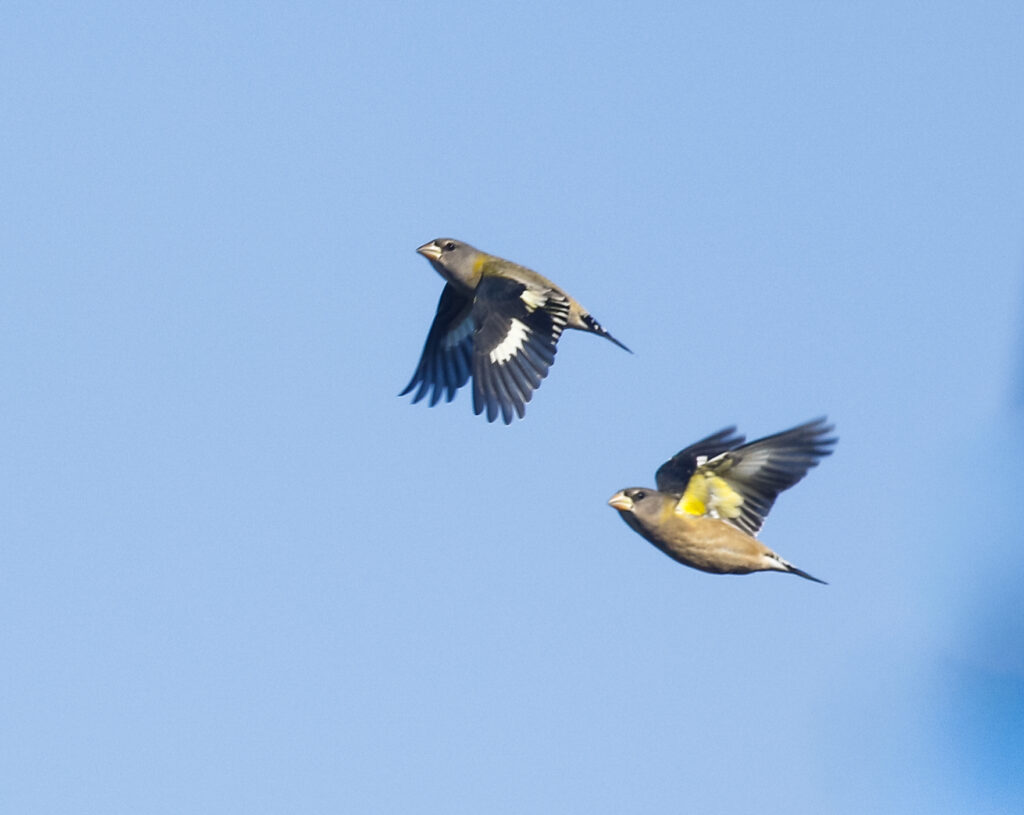
Evening Grosbeaks. Photo by Skye Haas

Black-backed Woodpecker. Photo by Frank Fabbro
With less than two weeks remaining in the waterbird count, duck movements haven’t started to slow too dramatically yet. Historically, the last week of counting can be very slow, but movements of some species are trending a bit later in recent years. The weather forecast for the coming week is all over the place, but the common theme is strong winds in many different directions and potentially our first measurable snow.
~Frank Fabbro, 2025 Fall Waterbird Counter
Featured Photo: Long-tailed Ducks
You can now see the waterbird count data on Trektellen! Check it out at trektellen.nl/count/view/4209.
You can keep up with the 2025 Fall Waterbird Count by reading Frank’s weekly blog posts and following WPBO’s social media (Facebook, Instagram, and X). The fall waterbird count runs August 15 through November 15.
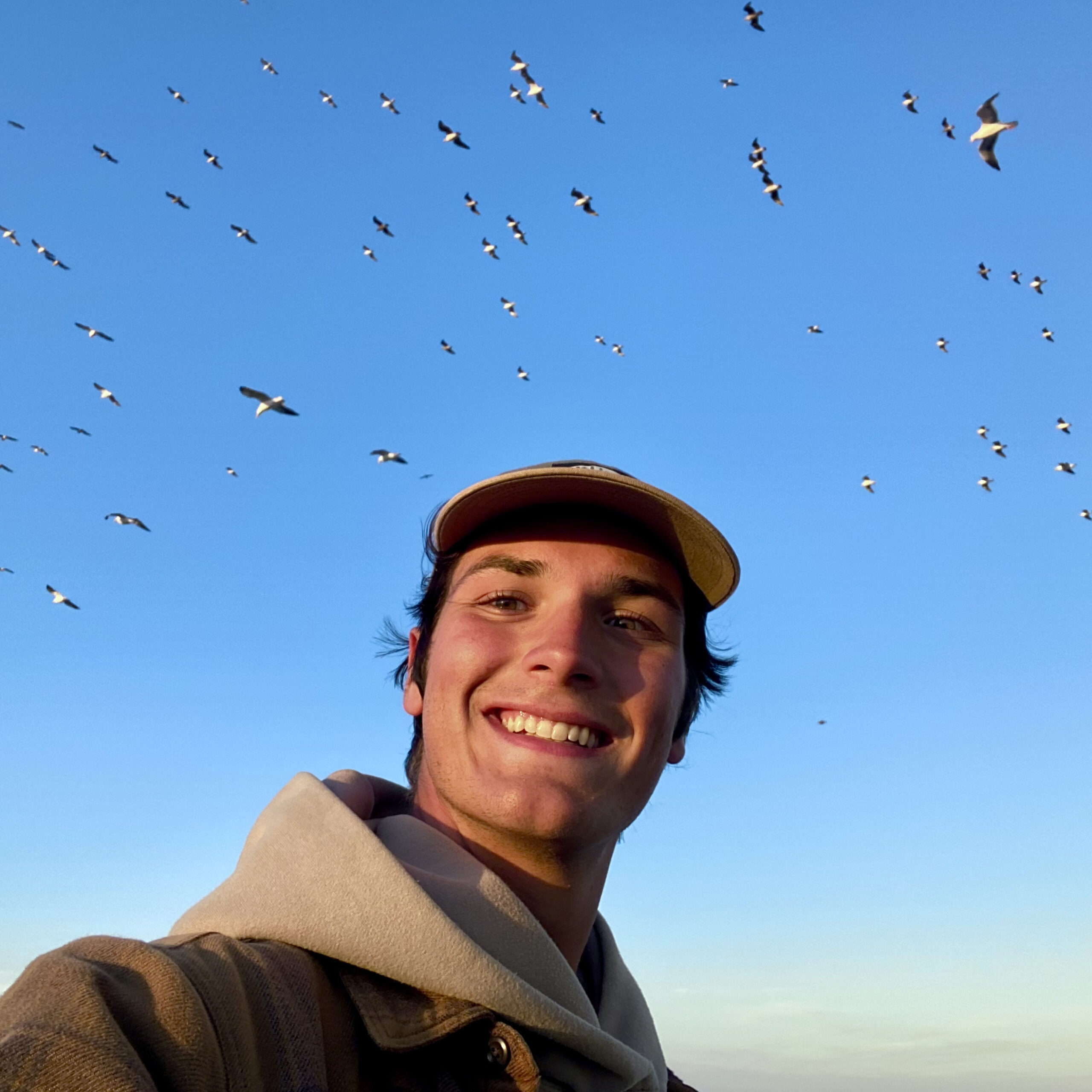
Frank Fabbro: 2025 Fall Waterbird Counter
Frank is an avid birder who was first introduced to the spectacle of bird migration along the Mississippi Flyway in his home state of Minnesota ten years ago. Since then, he has pursued his passion for birds, and the amazing places they inhabit, across the country and around the world. He studied Wildlife Biology and Landscape Restoration at the University of California, Davis, and since graduating has worked on a variety of bird-related projects, ranging from Spotted Owl surveys to prairie-chicken tagging and counting migrating seabirds. He’s excited to be back in the Northwoods, once again experiencing the excitement of fall migration along the shores of Lake Superior.


